Close-up video of fossils dating back billions of years.
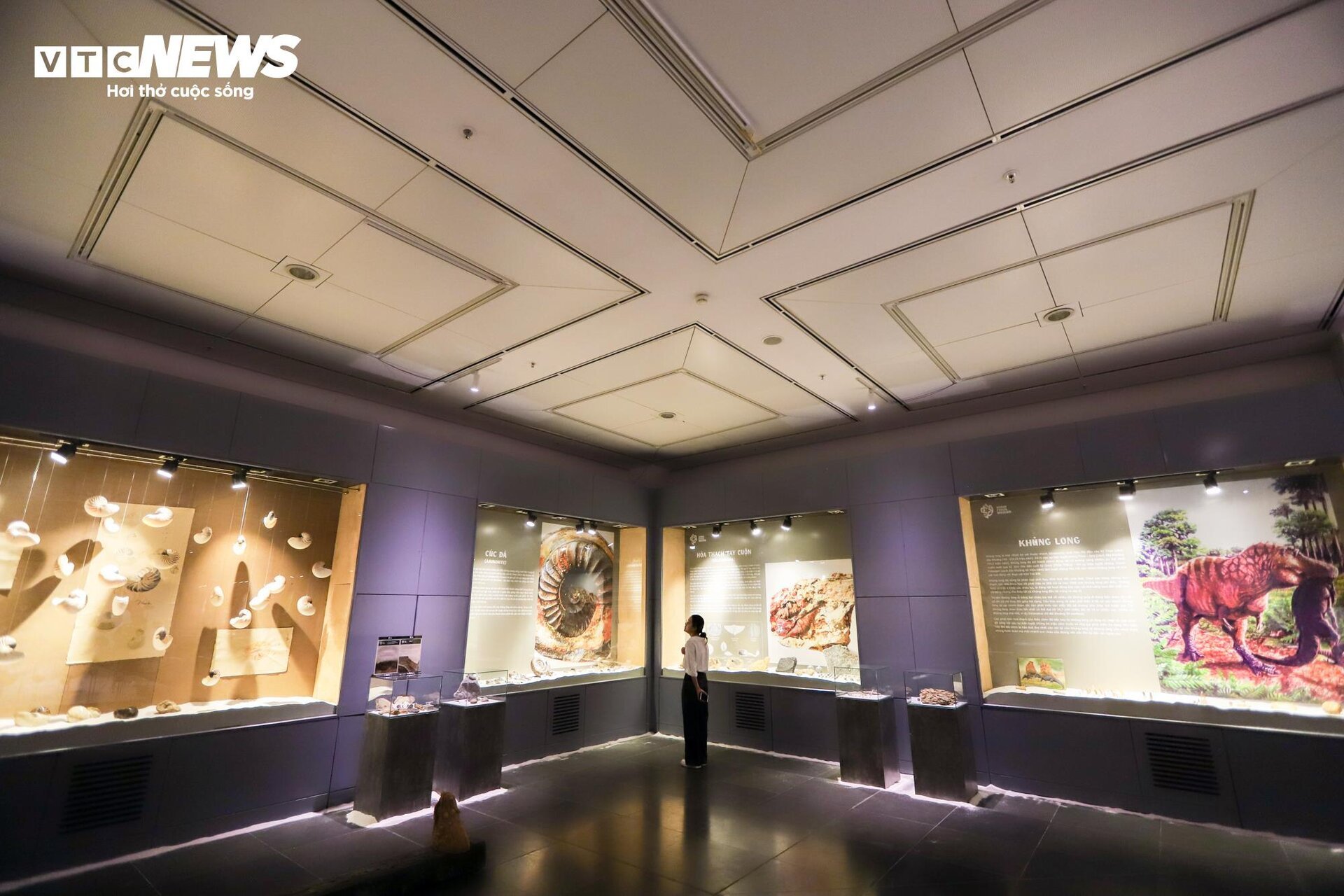
At the Hanoi Museum (Nam Tu Liem district), a thematic exhibition "The history of the formation of the earth through a collection of fossil artifacts" is taking place, organized by the Hanoi Fossil Museum in collaboration with the Hanoi Museum.
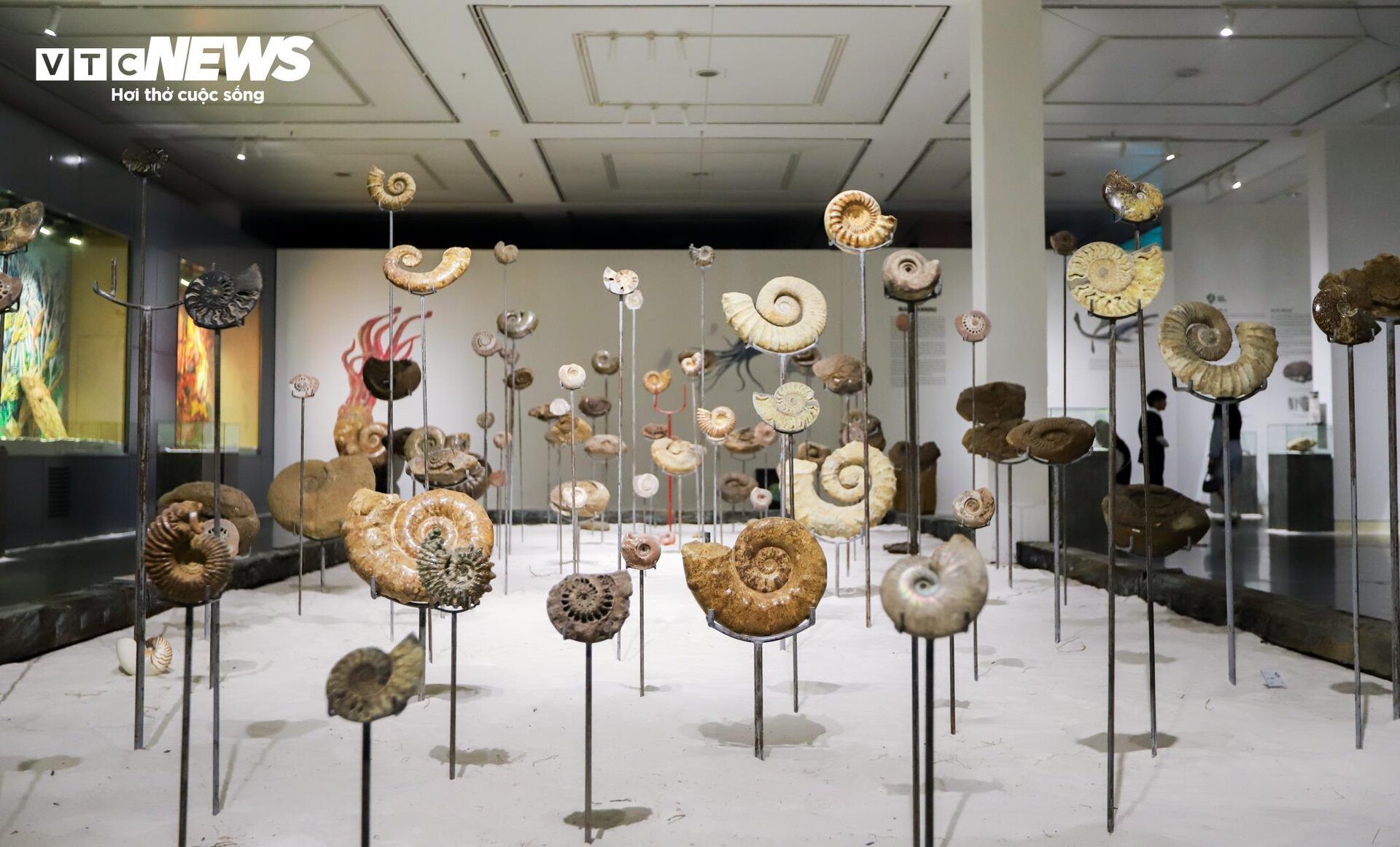
The Hanoi Fossil Museum currently owns a massive collection of thousands of valuable documents and more than 15,000 fossil specimens collected from many places around the world as well as in Vietnam, dating back millions to billions of years.
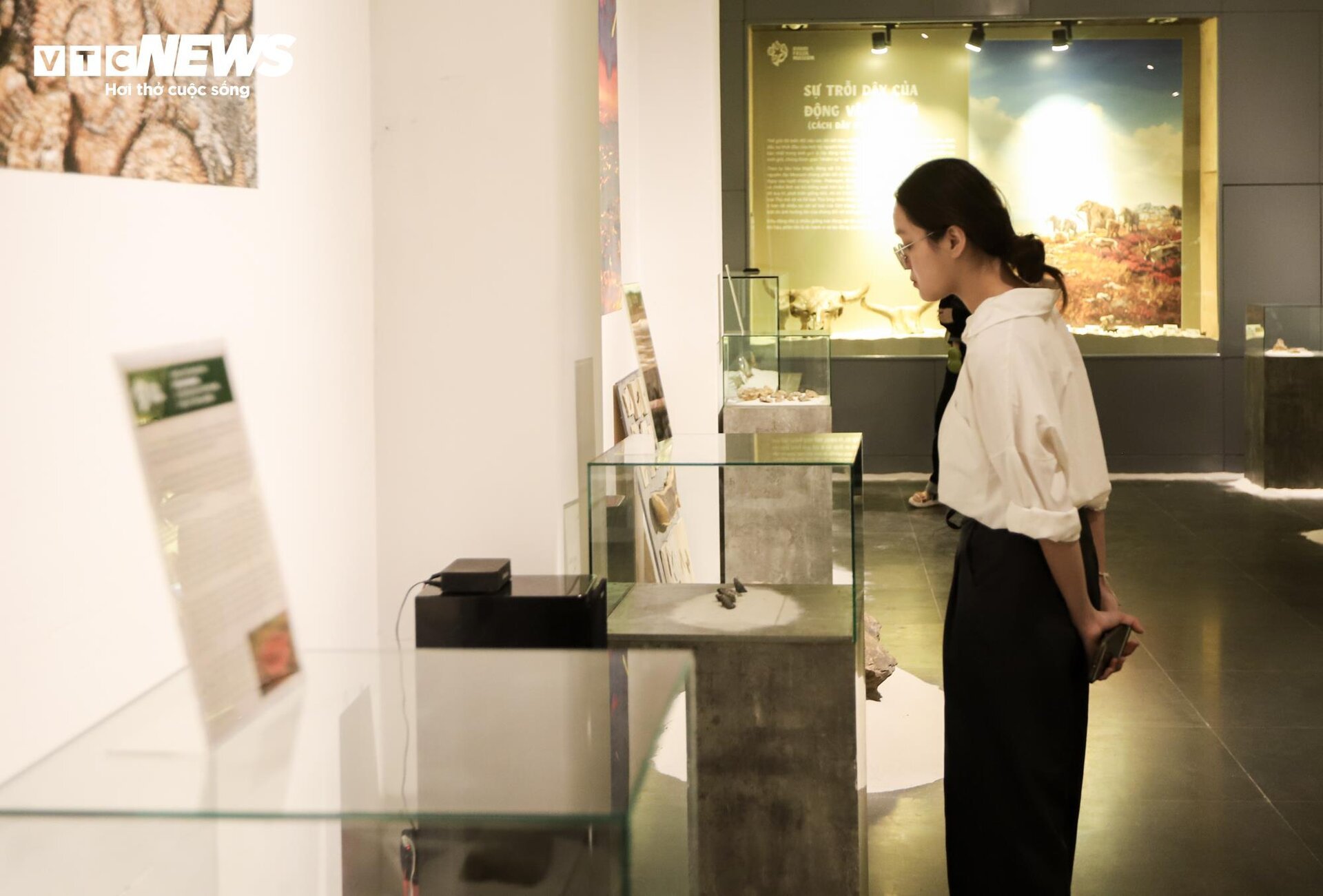
Most of the above specimens have been granted relic and antiquity certificates by the Hanoi Department of Culture and Sports. These are specimens of high historical and scientific value, helping to recreate a paleontological land - traces of ancient life, thereby creating a space for paleontology and fossil lovers.
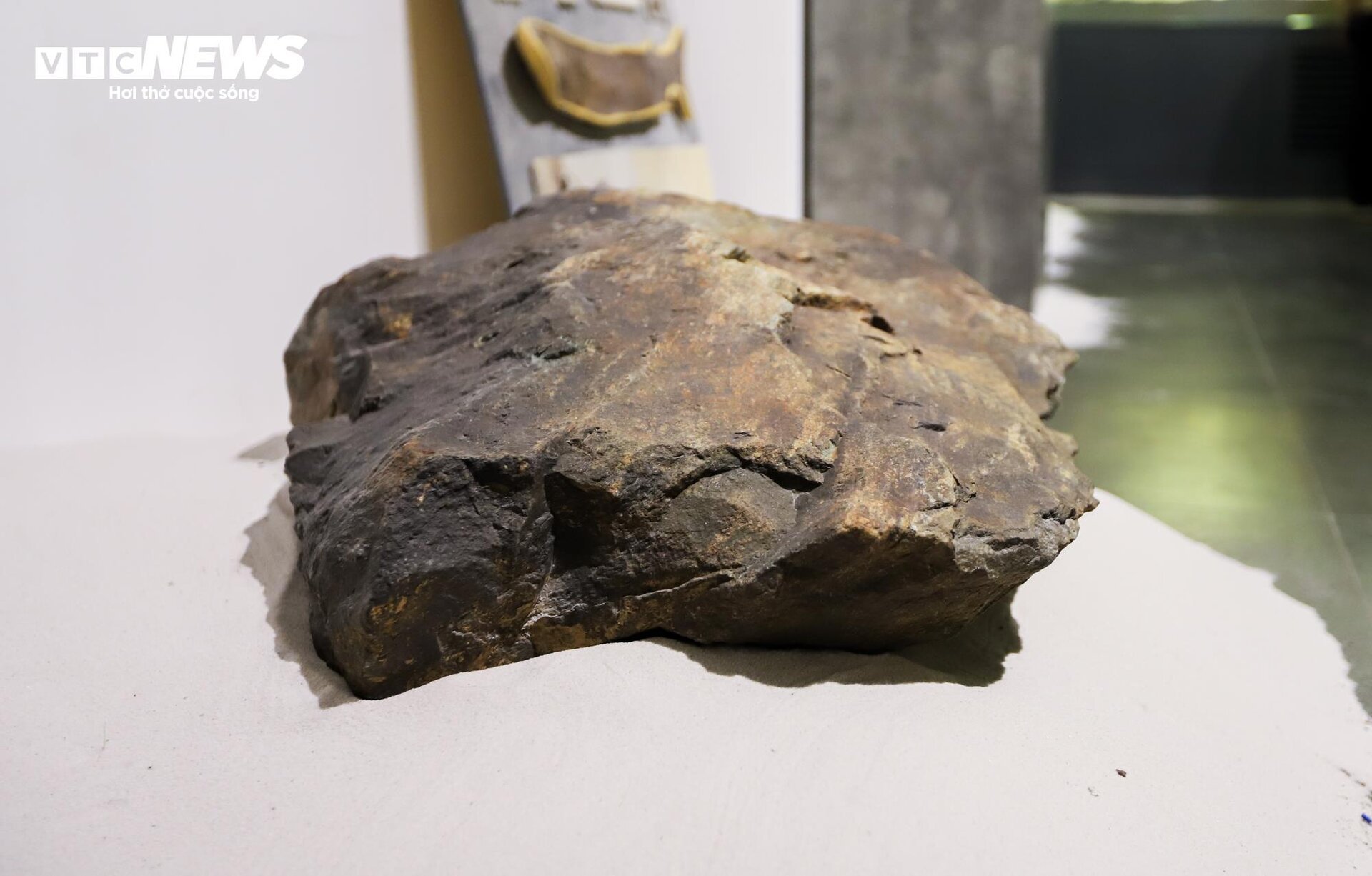
The highlight of the exhibition is the oldest rock in Vietnam, dating back 2.936 billion years, discovered in 2001 by Associate Professor, Dr. Tran Ngoc Nam (Head of the Department of Geography - Geology, Hue University of Science) at the Hung Khanh waterfall area, in the Elephant Mountain range (Tran Yen district, Yen Bai province).
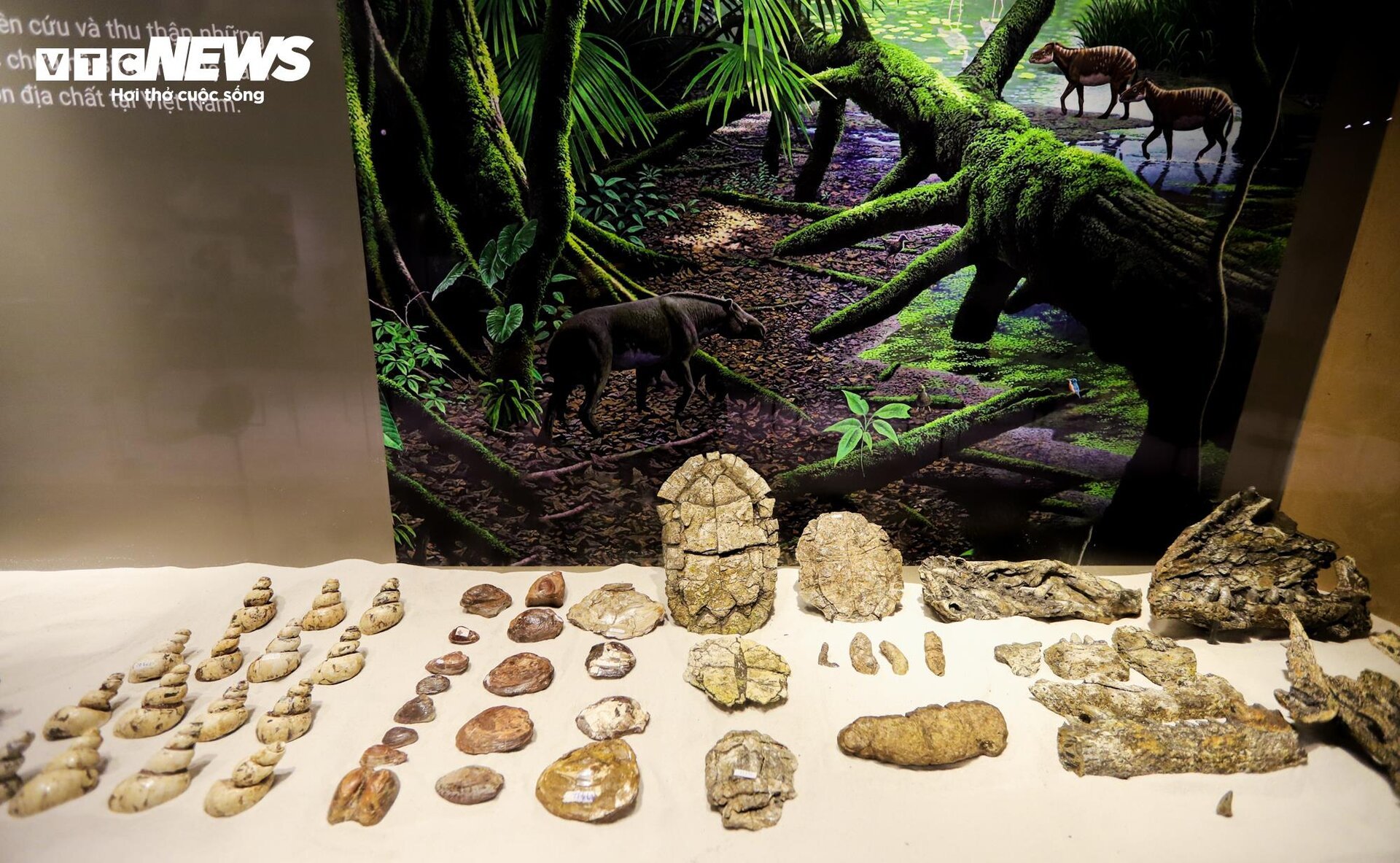
Fossil specimens of snails, turtles and crocodiles were found in Na Duong forest, Lang Son.
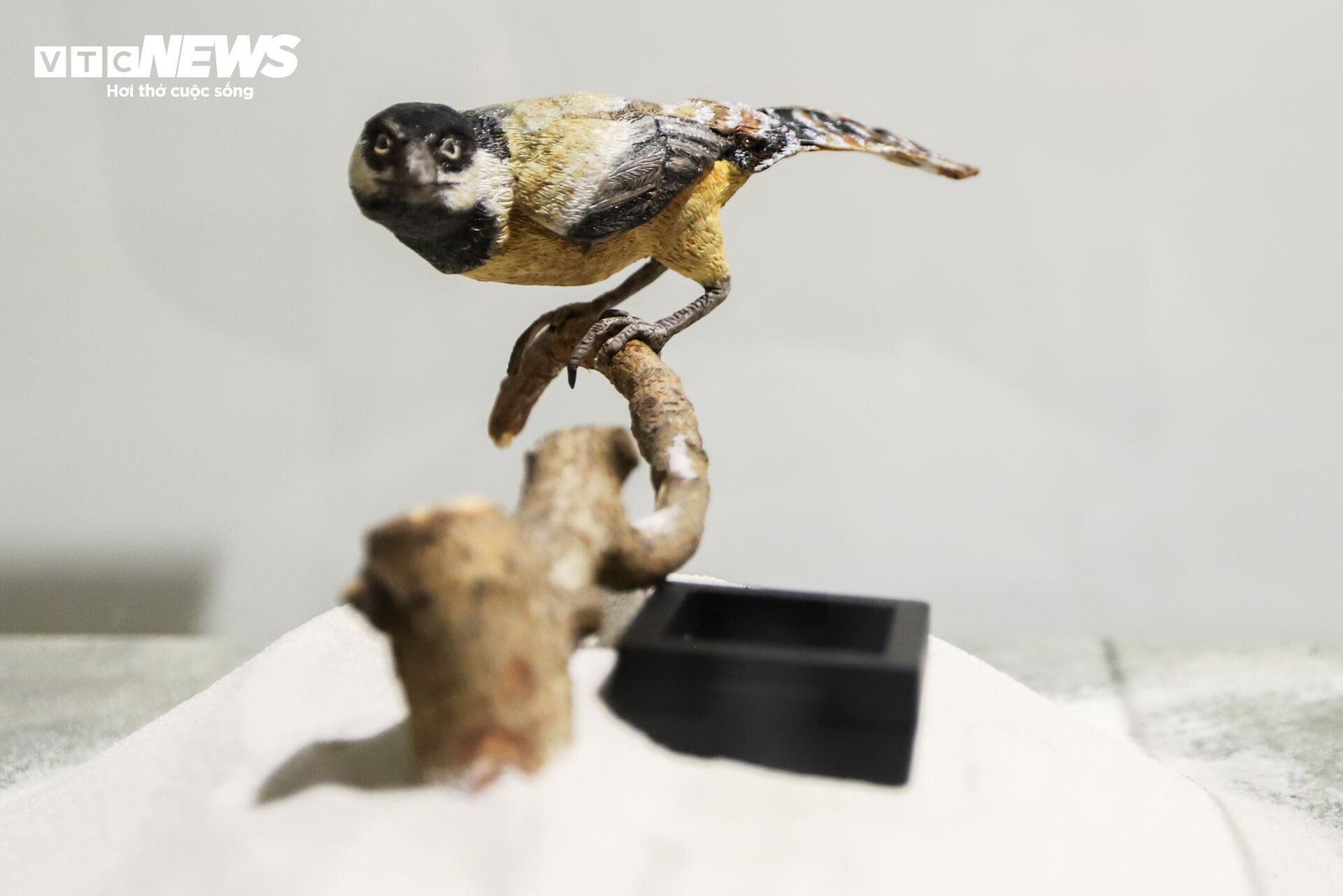
Reconstructed image of bird dinosaur traces. According to scientists, the difference between bird dinosaurs and modern birds lies in the evolution of bone structure. The sternum and pelvis of bird dinosaurs are smaller than modern birds. Through evolution, the sternum and pelvis of modern birds are larger to help them fly farther and faster.
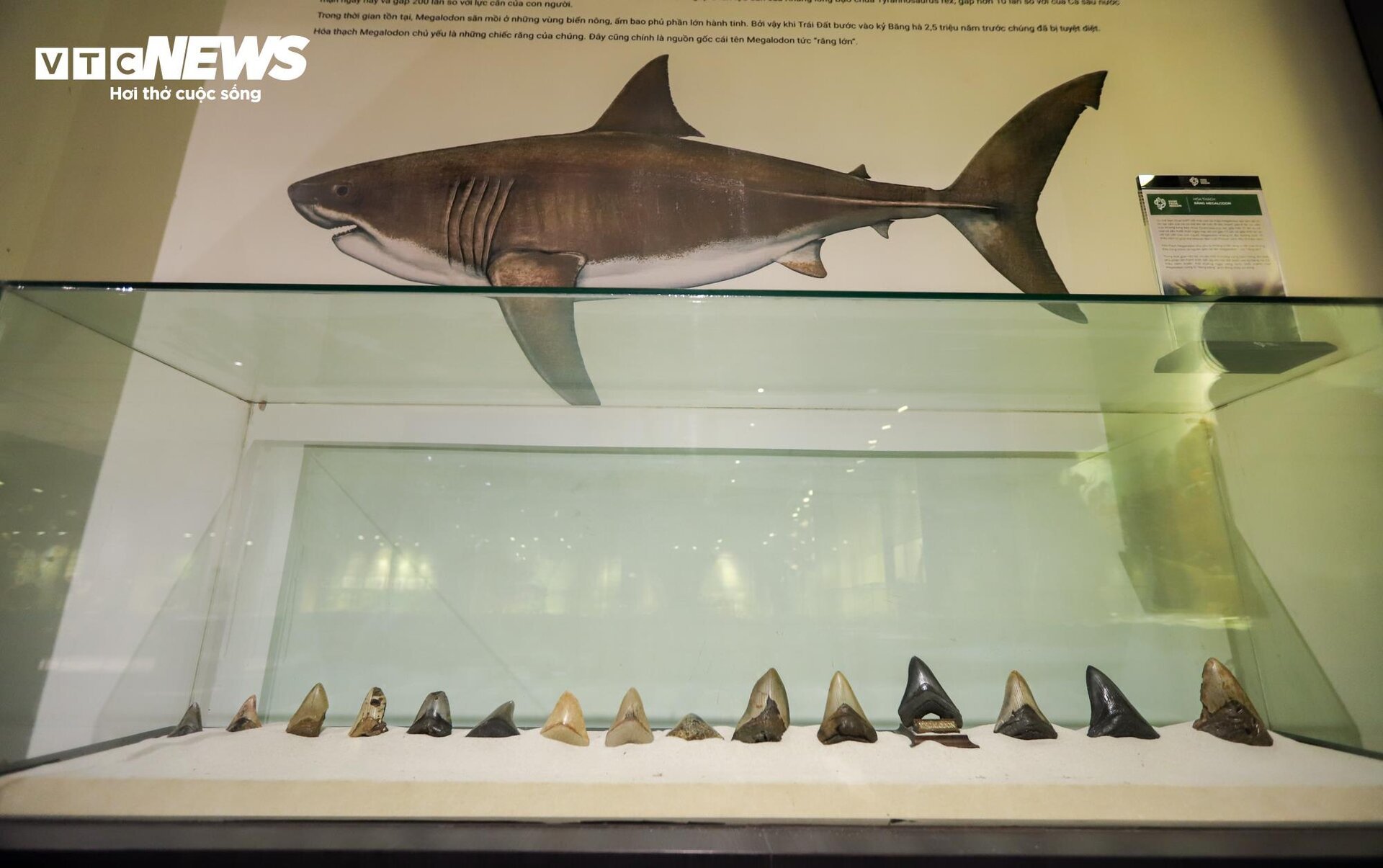
Megalodon shark tooth fossil. This is an extinct giant shark belonging to the class Cartilaginous fish, which lived about 15.9 to 2.6 million years ago during the Cenozoic Era (Middle Miocene to Late Pliocene). Based on fossil specimens, Megalodon is believed to have grown to over 20m in size and weighed over 100 tons. This fish once dominated the ocean for a long time.
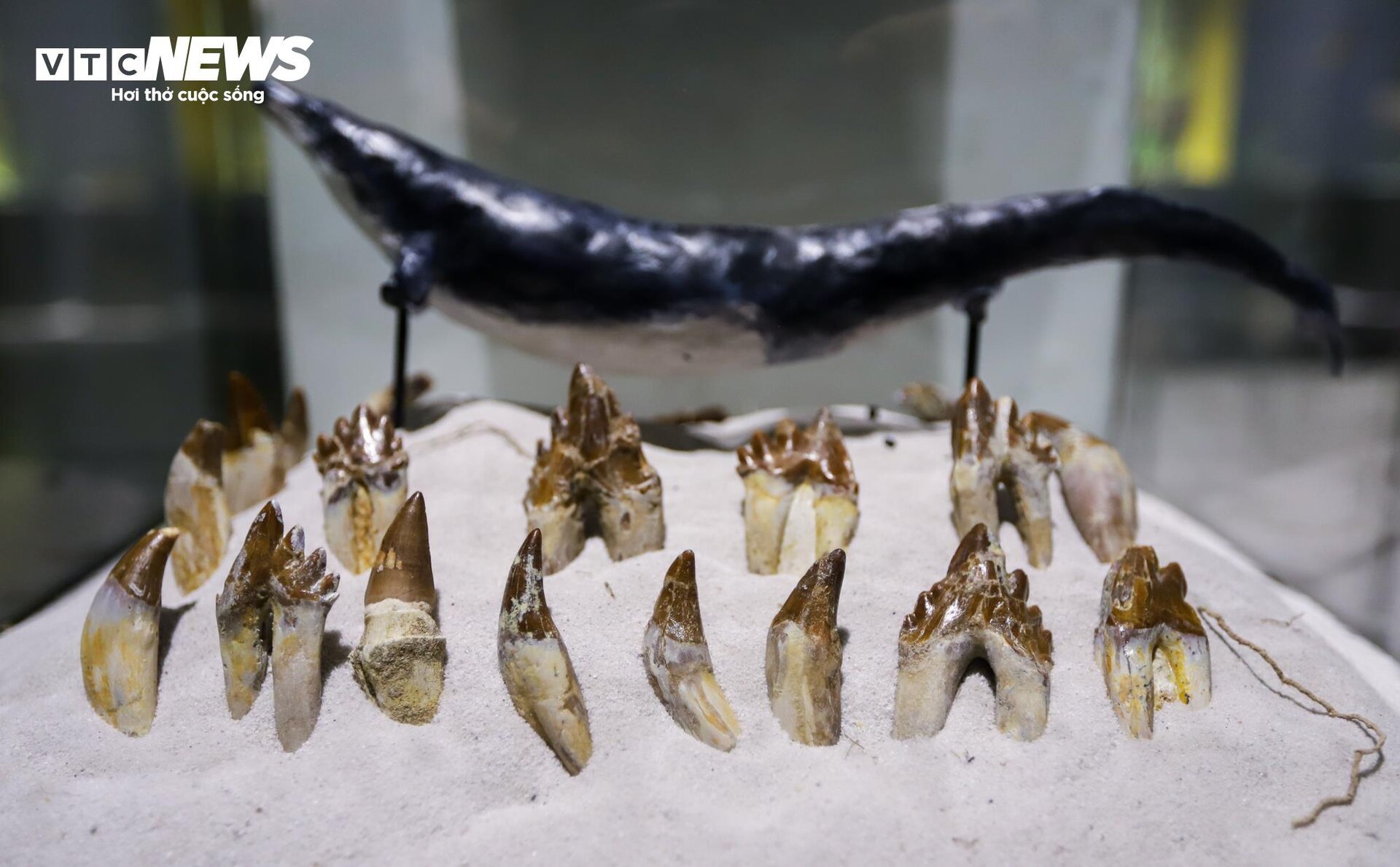
Fossil tooth of the ancient giant whale Basilosaurus. This is a species of a genus of whale that lived 40 to 34 million years ago during the late Eocene and is the ancestor of modern whales today.
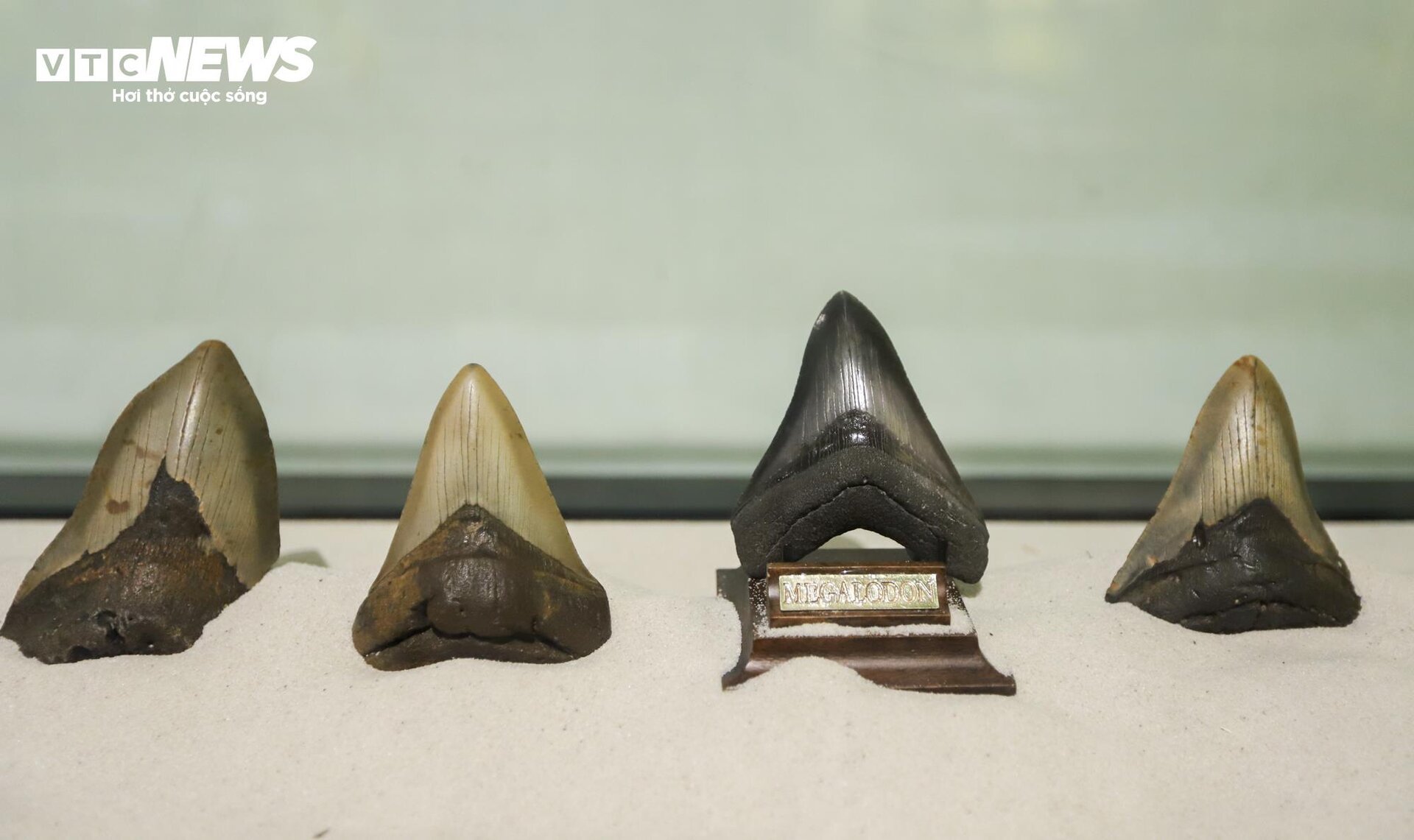
Megalodon Shark Tooth Fossils. This now extinct shark, a member of the cartilaginous fish class, dominated the oceans for 20 million years, and was considered one of the largest and most powerful vertebrates in existence. Megalodon fossils are mostly teeth.
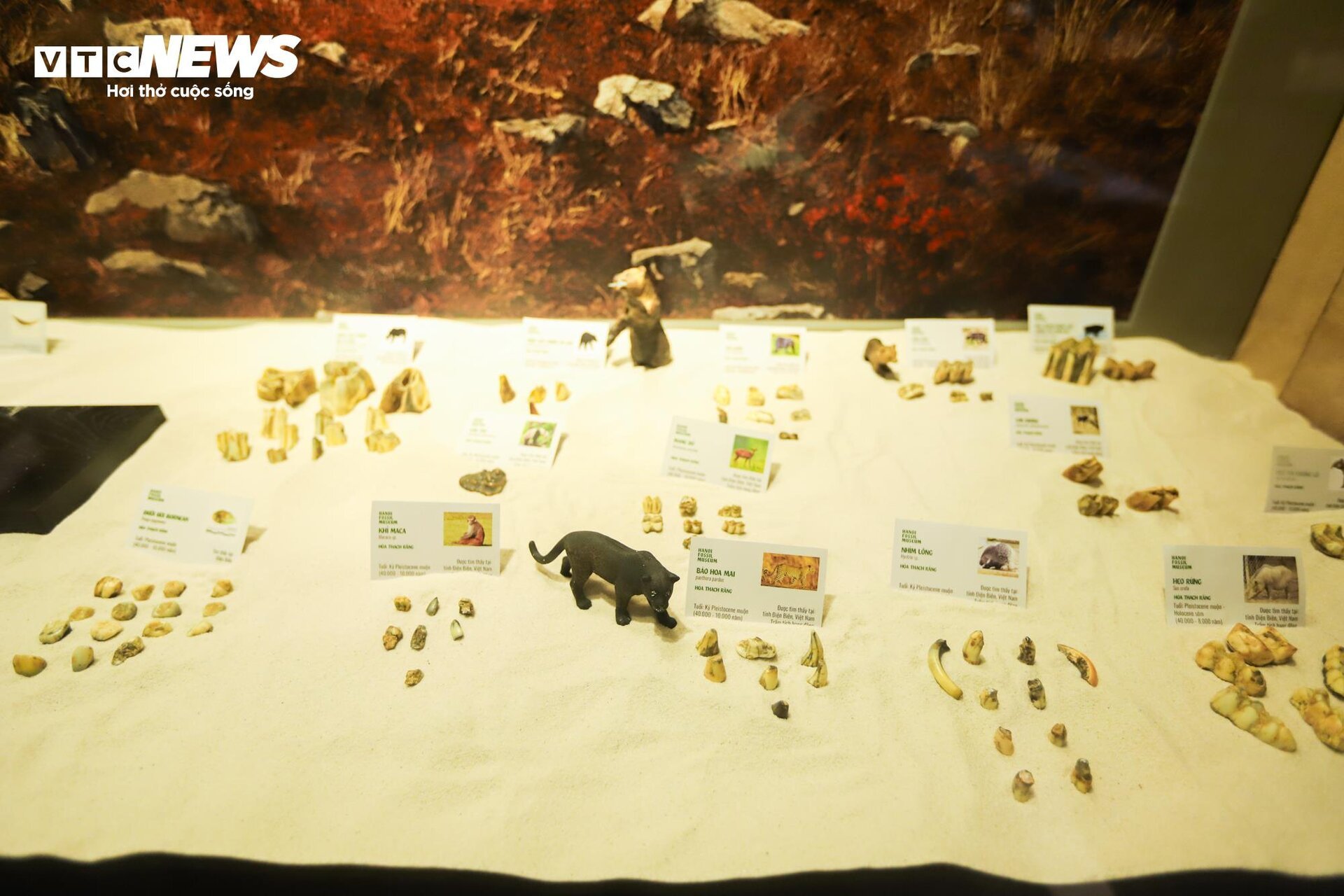
Fossil specimens of rhinoceros, bears, primates and cats were found in Dien Bien.

Fossil specimens of the elephant order, the most famous of which is the mammoth. To date, there are only three species of elephants left: the African bush elephant, the African forest elephant, and the Asian elephant.
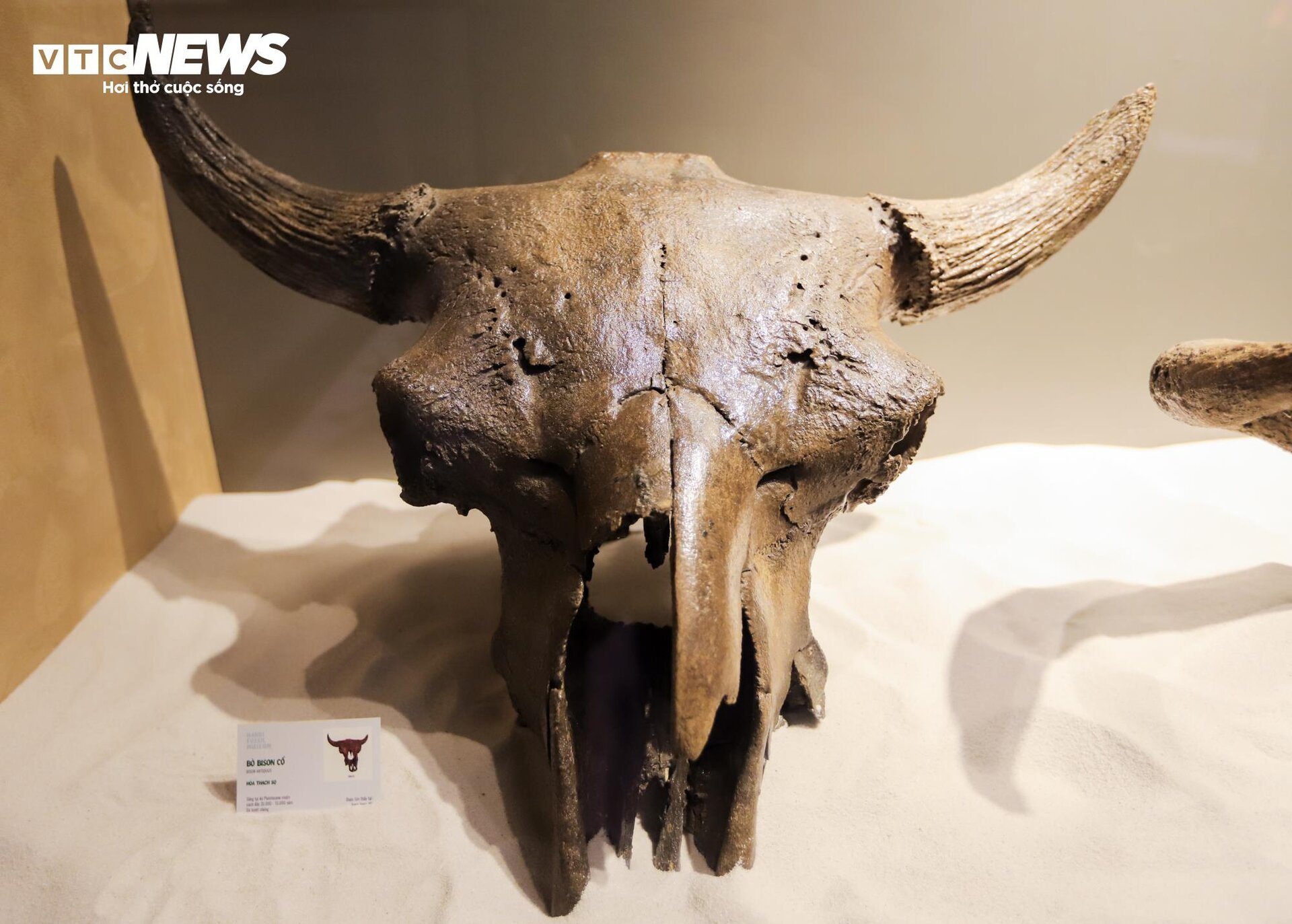
Fossil skull of an ancient Bison, which appeared 10 thousand years ago, this species of cow is now extinct. The fossil skull was found in Iowa, USA.
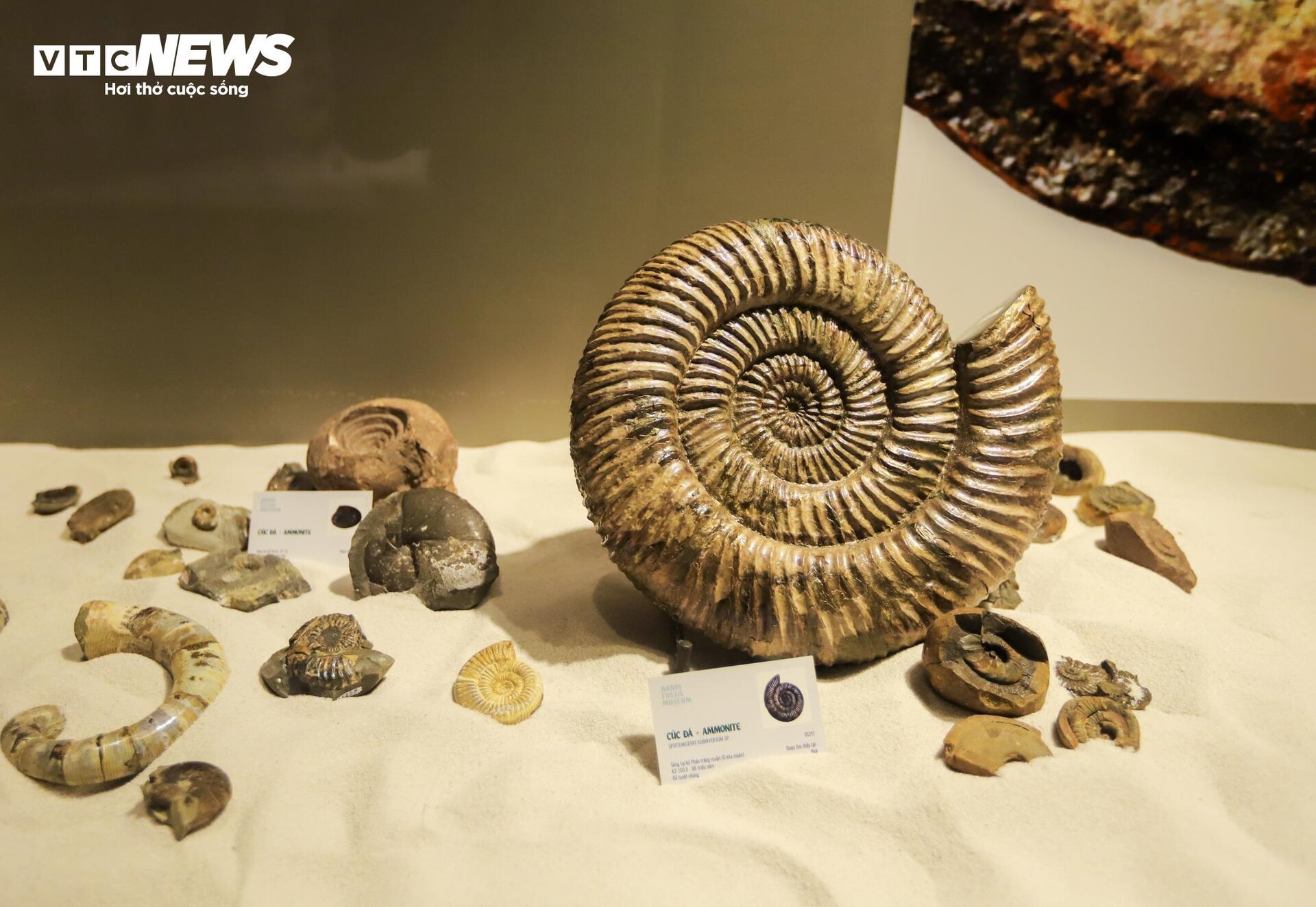
Hundreds of ammonite fossils are on display in the exhibition. Ammonites are a group of marine invertebrates, belonging to the class Cephalopoda, closely related to living life forms such as octopuses and nautiluses.
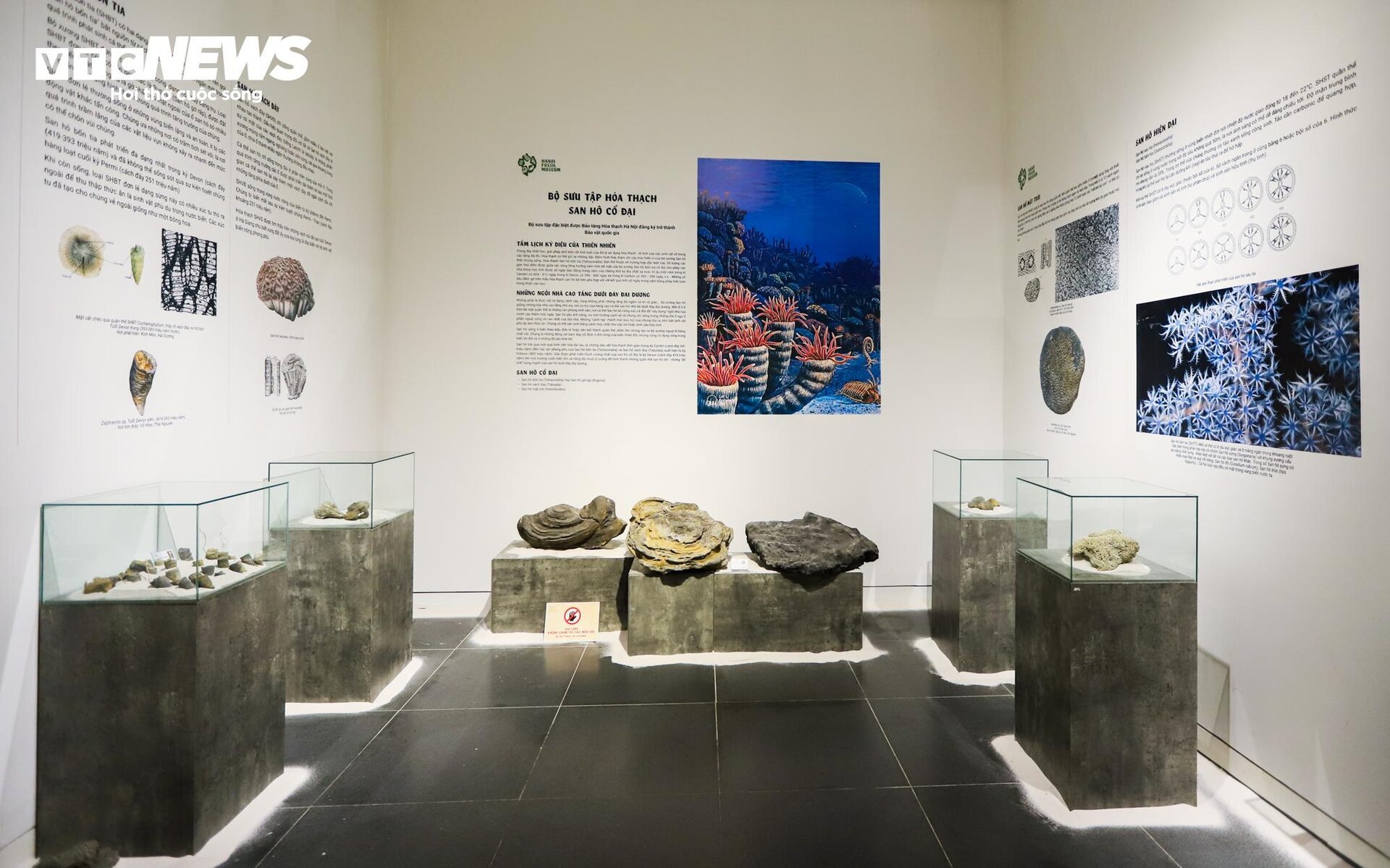
Honeycomb-shaped coral fossils found in Trang Xa commune (Vo Nhai district, Thai Nguyen province) are more than 400 million years old.
Source




![[Photo] Hungarian President begins official visit to Vietnam](https://vphoto.vietnam.vn/thumb/1200x675/vietnam/resource/IMAGE/2025/5/27/ab75a654c6934572a4f1a566ac63ce82)
![[Photo] Vice President Vo Thi Anh Xuan, French President Emmanuel Macron and his wife visit Hanoi University of Science and Technology](https://vphoto.vietnam.vn/thumb/1200x675/vietnam/resource/IMAGE/2025/5/27/267b6f2bdf3e46439f081b49f6ec26b1)


































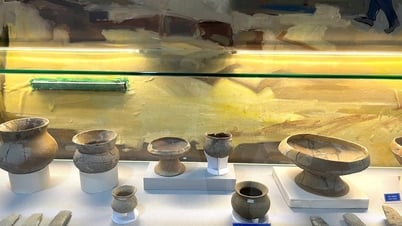



























































Comment (0)